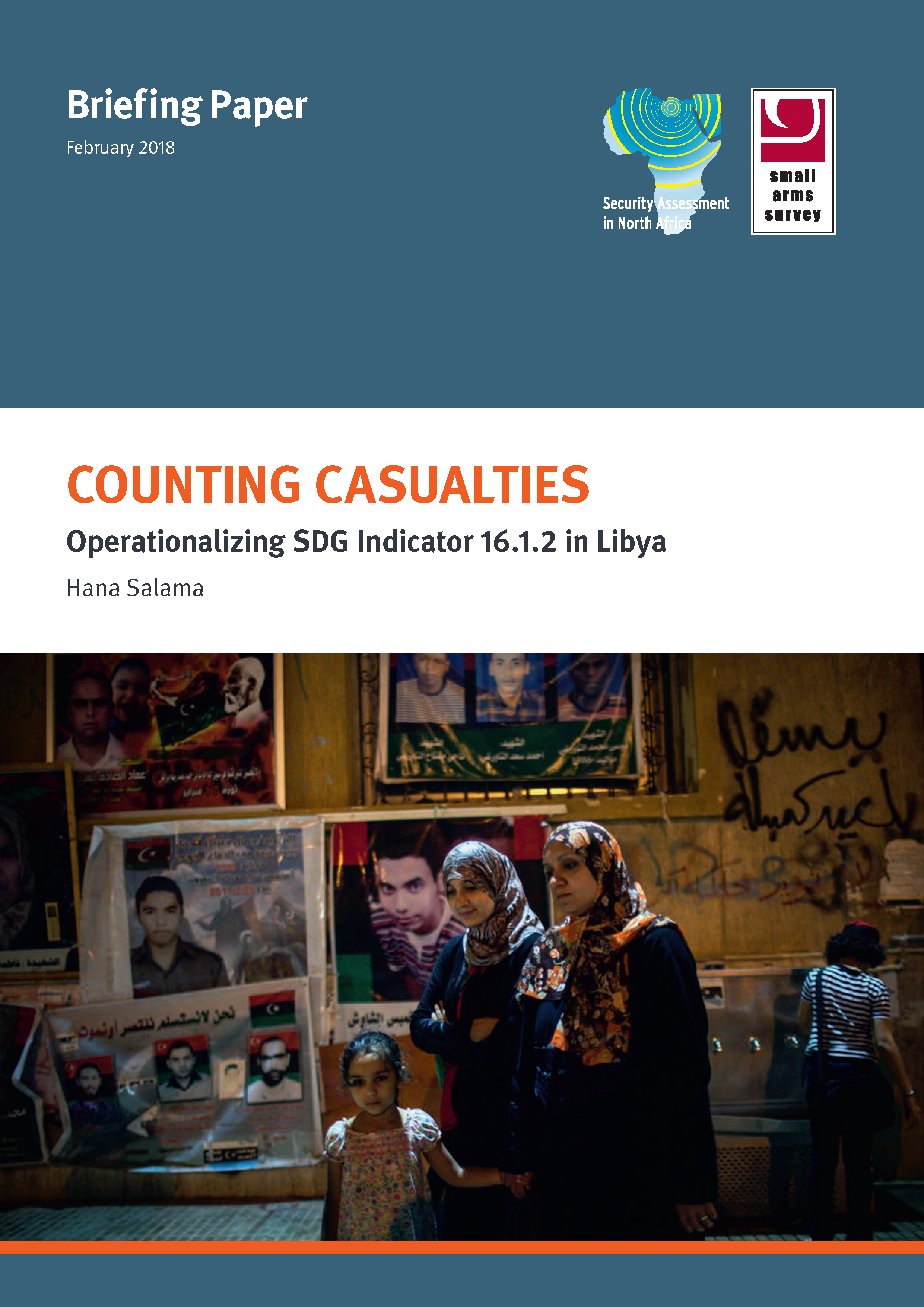
Counting Casualties: Operationalizing SDG Indicator 16.1.2 in Libya
Although Libya's estimated rate of violent deaths is still far below those of Syria and several Central American nations, it remains significant, ranking eighth globally for 2016. This unenviable situation is symptomatic of the ongoing turmoil and instability facing the country since 2011.
In fact, the human toll may well be much worse, as efforts to measure violent deaths in the country have been largely inconsistent and uncoordinated so far. Actors working to measure these casualties often use differing approaches, definitions, and criteria which has resulted in widely varied death estimates and a lack of consistent reporting.
In Counting Casualties: Operationalizing SDG Indicator 16.1.2 in Libya, a Briefing Paper from the Small Arms Survey’s Security Assessment in North Africa (SANA) project, casualty recording expert Hana Salama investigates the various challenges to measuring casualties in Libya. Salama carries out this analysis in the context of gathering data for Sustainable Development Goal (SDG) Indicator 16.1.2, which calls for states to report on ‘conflict-related deaths per 100,000 population, by sex, age, and cause’. In doing so, the analysis seeks to support discussions on developing a standardized methodology and mechanism to meet Indicator 16.1.2 from the perspective of an ongoing conflict.
Available in: ARABIC | ENGLISH
- Learn more about the SANA project
Have your say about Small Arms Survey resources: take 5 minutes to fill out our questionnaire.